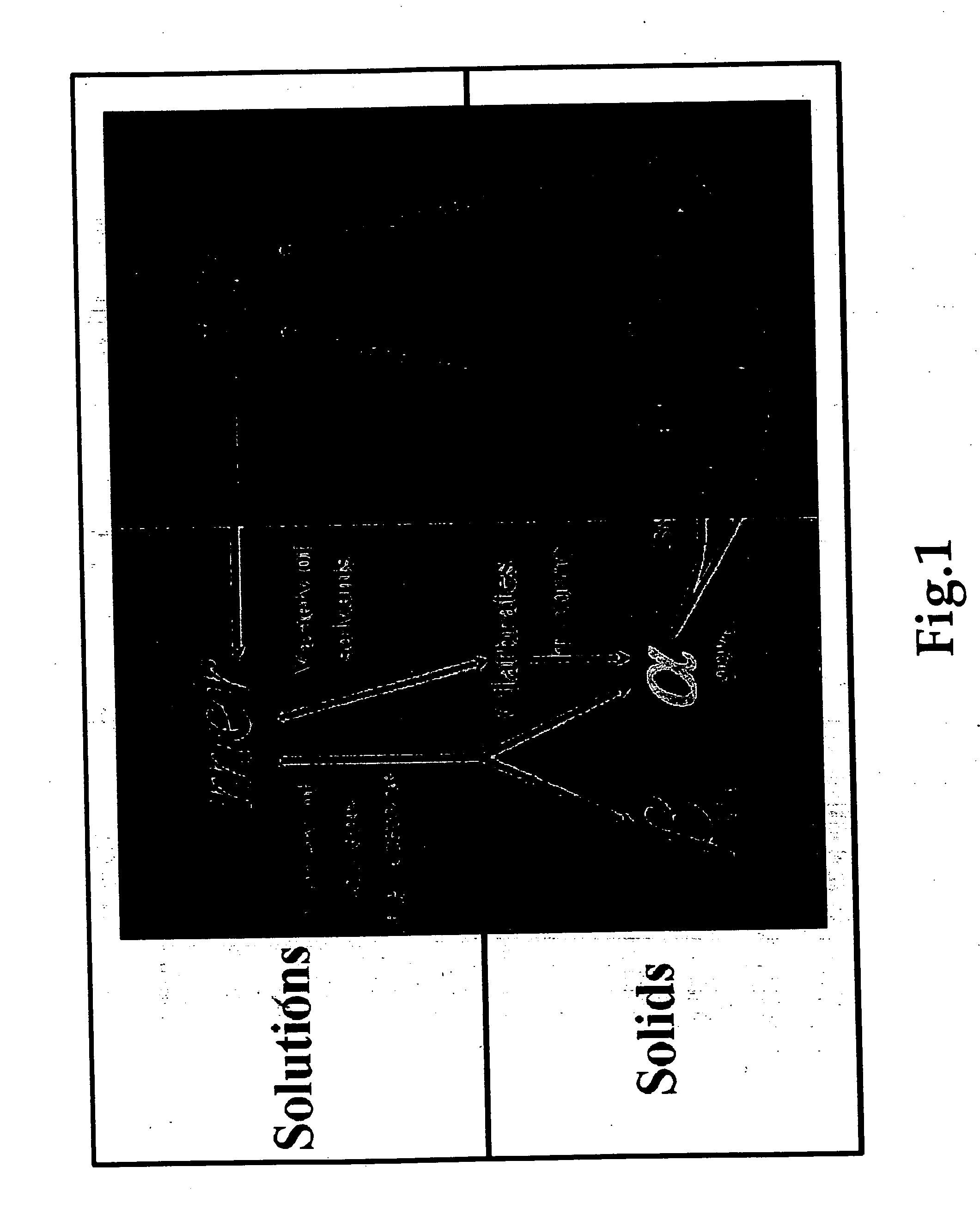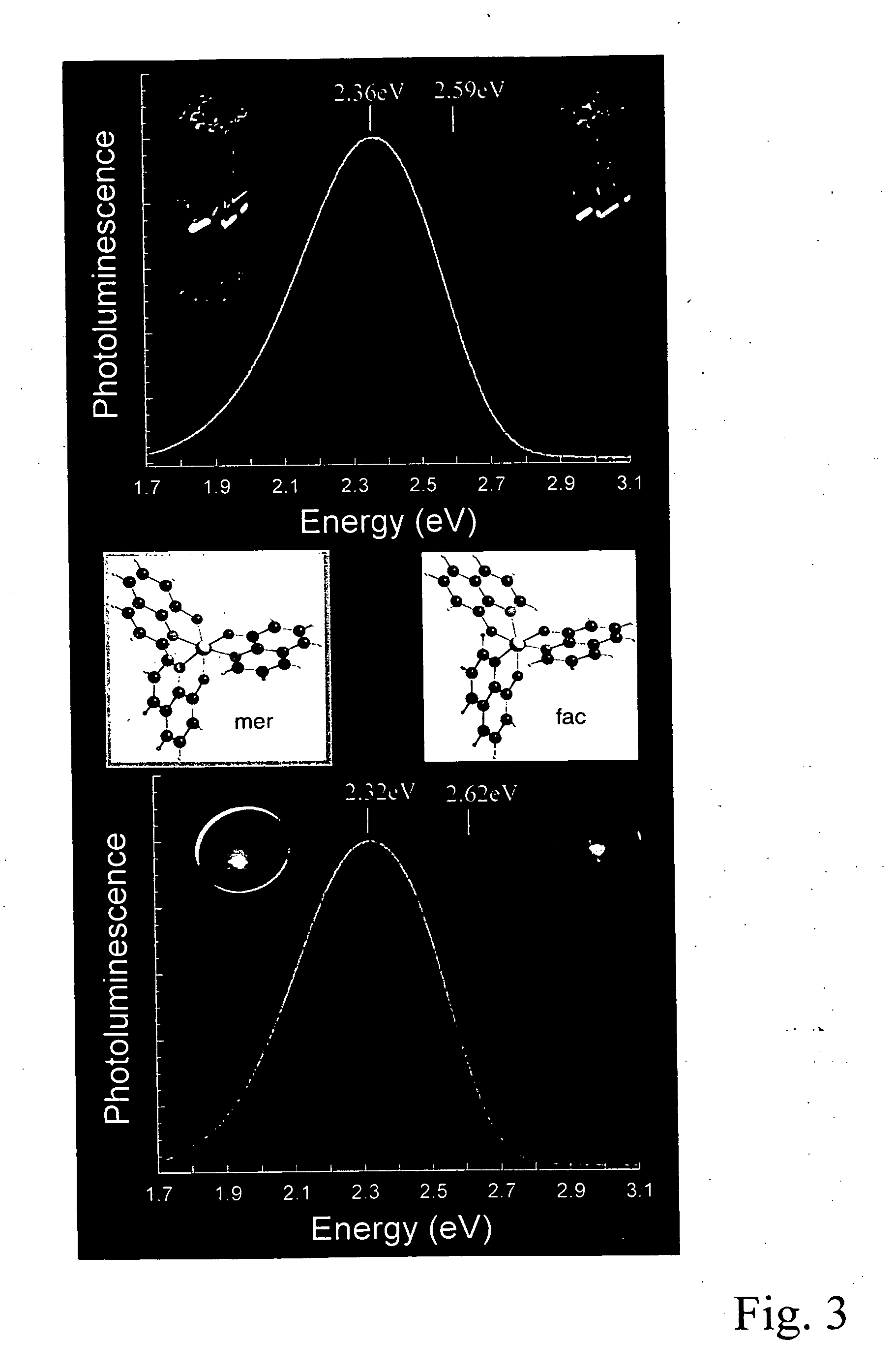Blue emitting tris (8-oxoquinoline) aluminum (III) (alq3)
- Summary
- Abstract
- Description
- Claims
- Application Information
AI Technical Summary
Benefits of technology
Problems solved by technology
Method used
Image
Examples
example # 1
[0046] Preparation of γ-Alq3 (polycrystalline powders): commercial α-Alq3 is heated to 395° C. using a temperature gradient of 10° C. / minute in the 50-350° C. range and of 1° C. / minute between 350° C. and 395° C. After maintaining the system at this temperature for some minutes, is its rapidly cooled down to room temperature. The XRPD analysis show that the resulting powders, of dark yellow color, consist of a mixture of the γ-Alq3 and δ-Alq3 phases. On using 15 mg of α-Alq3 powders, the γ-Alq3 / δ-Alq3 ratio is close to 10 / 1; such ration is not significantly modified by an increase of the heating rate up to 10° C. / minute or by a decrease of the cooling rate, down to 1° C. / minute. Moreover, this ratio remains unchanged by heating at the maximum pre-sublimation temperature of 410° C. The use of larger amounts of the starting material (grams), however, was found to typically afford lower γ-Alq3 / δ-Alq3 ratios.
example # 2
[0047] Preparation of δ-Alq3 (polycrystalline powders): γ-Alq3, prepared as described in the Example # 1 and thus containing already small quantities of δ-Alq3, is suspended in acetone for 15 hours at room temperature with occasional stirring. Through centrifugation, the resulting light yellow powder is then recovered. The XRPD analysis shows the presence of (almost pure) δ-Alq3 phase, accompanied by less than 4% residual γ-Alq3. Neither the solvent volume nor the γ-Alq3 / δ-Alq3 ratio in the starting powders have any influence on the γ-Alq3 / δ-Alq3 ratio in the final mixture. The disclosures in Italian Patent Application No. M12002A001330 from which this application claims priority are incorporated herein by reference.
PUM
 Login to View More
Login to View More Abstract
Description
Claims
Application Information
 Login to View More
Login to View More - R&D
- Intellectual Property
- Life Sciences
- Materials
- Tech Scout
- Unparalleled Data Quality
- Higher Quality Content
- 60% Fewer Hallucinations
Browse by: Latest US Patents, China's latest patents, Technical Efficacy Thesaurus, Application Domain, Technology Topic, Popular Technical Reports.
© 2025 PatSnap. All rights reserved.Legal|Privacy policy|Modern Slavery Act Transparency Statement|Sitemap|About US| Contact US: help@patsnap.com



